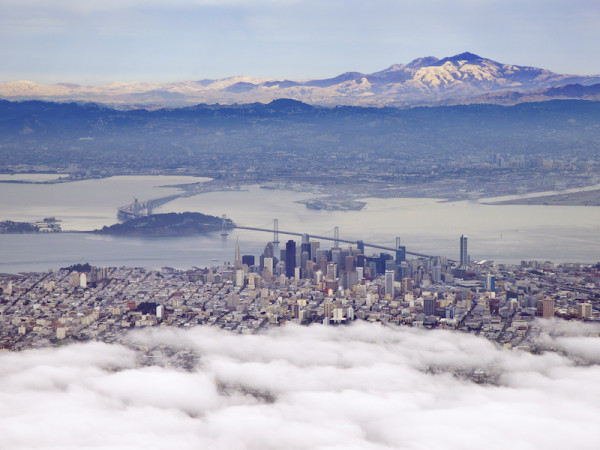
Bay Area Market Remains Optimistic Despite Anecdotes of Sublets, Moves and Tech Struggles
Bay Area Market Remains Optimistic Despite Anecdotes of Sublets, Moves and Tech Struggles
Crescent Heights is walking away from the chance to build a 750-foot skyscraper at the Transbay Transit Center. Dropbox Inc. is looking to sublease half of its headquarters office space at China Basin. And Twitter Inc. is reportedly subleasing a floor of its Mid-Market headquarters.
Anecdotes are piling up that could argue the case that, after six years of torrid growth, the Bay Area real estate market is peaking.
But, heading into 2016, many brokers and researchers remain optimistic. Although the market may be slowing, there are reasons to expect it to continue to grow. And many of the factors that contributed to previous busts are nowhere in sight, some observers say.
“The rate of growth is certainly slowing down and has already slowed,” said Colin Yasukochi, CBRE’s director of research and analysis for Northern California. But “the rate of growth that’s occurring here is still among the fastest in the country. It’s just not as fast as it was two years ago. We don’t see any definite signs that things have reached a peak and things are starting to cool off.”
In other anecdotes of concern, non-tech companies Gymboree and Charles Schwab & Co. are also looking to sublease some of their office space.
And in the tech economy, the downsizing of Square Inc.’s initial public offering in November added to worries that the billion-dollar valuations that venture capitalists have been giving to private companies won’t be supported by public market investors.
That may be even more likely after the Nasdaq’s decline in the first week of the new year.
But Phil Mahoney, an executive managing director with Newmark Cornish & Carey in Santa Clara, says that he is likely to remain optimistic as long as the job market remains strong.
“The reason I don’t believe we have topped is look at the demand driver,” he said. “If you tell me that Bay Area unemployment is going from the present 4 percet to 8 or 10 percent then I’ll tell you, yeah, it’s going to slow down because demand is going to slow down.”
The recent struggles of some technology companies—such as ride-sharing service Sidecar, which shut down in December—may actually help to keep the real estate market stable.
“You’ve seen a number of unicorns that have lost their horns,” Mahoney said. “It was becoming too much like ’99 and 2000 again. This, to me, is a welcome readjustment and re-e v a luation.”
At the same time, the tech economy remains strong enough that some non-tech companies are being priced out of San Francisco. That accounts for some of the space being subleased by non-tech companies, Yasukochi said.
And even with the new subleases available, sublet space accounted for less than 10 percent of the market as of late November, according to Mahoney. He recalled times in the past, after downsizings at companies like HP Inc. and Cisco Systems Inc., when two-thirds of the available space was sublet.
Aside from the continuing strength in the tech economy, the Bay Area real estate market may also be protected from past excesses.
Lenders haven’t been as free with financing of new development as they were in the past, Mahoney said.
And some cities that would otherwise be popular spots for new headquarters and business expansions have been resistant to new development. Those includ e San Francisco, Mountain View and Palo Alto, which is essentially “closed for business” to developers, Mahoney said.

San Francisco shrouded in fog with Mt Diablo in the distance
